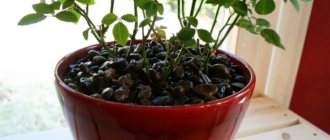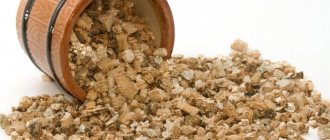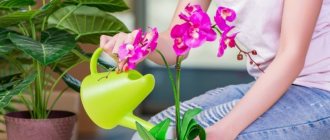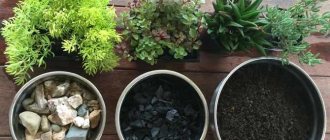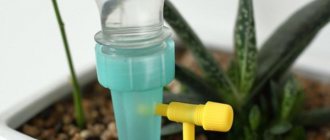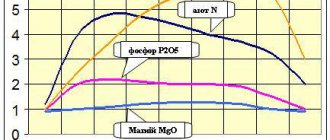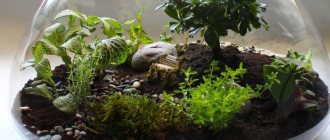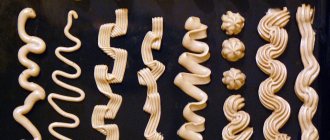Plant preparation
If the trip did not come as a surprise, it is better to prepare the plants in advance for the upcoming changes.
- Place in the shade to reduce evaporation. It also depends on the time of year, the presence of working heating devices and ventilation in the room.
- Remove affected leaves and inflorescences. Professionals advise partially thinning out healthy leaves, and be sure to remove not only blooming flowers, but also buds. This measure may seem cruel, but it will allow the plant to use water more economically.
- Wipe the leaves and spray them with a spray bottle.
- Place all flower pots in one place and cover the top with film, making several holes in it for air flow. An alternative to film can be a covering material - it is more porous, promotes air exchange and prevents the formation of mold.
- If you are placing flowers in groups, isolate diseased plants. In the immediate vicinity, even a banal fungus will quickly infect healthy neighbors.
- Immediately before leaving, all flowers need to be watered well. In rare cases, the plant is taken out along with the earth (a lump) and lowered into water, but not for long - so that the earth does not crumble.
Model rating
It is problematic to make an adequate rating of automatic watering models for indoor plants. Here, existing models often do not shine with fame, even if they are found in every home, and new designs appear every year, and each consumer needs something special, and not some average option that suits most other buyers. For this reason, we will not give away places, and we will not even claim that our automatic waterers from the list are definitely the best. These are just good samples of products that can be useful to every amateur gardener.
Idea M 2150 is a pear-shaped polypropylene analogue of a ceramic cone. For a large-scale home plantation, this solution is far from ideal, but for a single plant, and even if the owner is away for a short time, it is definitely the most profitable given its cost.
Do-it-yourself capillary irrigation, watering on fabric
- An automatic watering system can be organized using a glass jar and terry cloth. Place a damp, wrung-out towel at the bottom of the tray. Place pots of flowers on it.
- Pour water into a glass jar, close it with a lid with a small hole made (10 - 15 mm). A 3-liter bottle with a nylon sealed lid is suitable. In my photo - a half-liter with a regular screw cap. Cover the hole with your finger, turn the jar over and place it upside down there, on this terry towel. You will see air bubbles rushing upward. Water will seep out little by little from the hole in the lid.
- Turn the jar of water over and place it on a towel next to the flowers.
- Once the towel is sufficiently damp, air will stop flowing into the jar and water will stop flowing out.
- Check: Wring out the towel and place the jar of water back on it. Air bubbles will appear and the process will repeat - this means the automatic watering system is working. (Without a towel, water will not flow out of the jar.)
- How much water will flow to the plants depends on the type of pots and drainage (see above - watering with a bottle), as well as the thickness of the towel. It’s worth checking 10 days before your vacation to see how this automatic watering system will work.
Watering bottles of tomatoes is SUCH A TRICK!
Author. ILONA POPLAVSKAYA
Every year I plant a dozen tomato bushes. Water them for a very long time. Water dries out quickly, and tomatoes need a lot of them. From now on the problem is solved! Plastic bottles are useful. I noticed this idea online and decided to give it a try. Execution is very simple! I used one bottle for one tomato plant. Bottled watering is such a trick!
Capillary mat
The towel with the jar can be replaced with a purchased capillary mat for watering seedlings. The mat is pre-impregnated with water and pots of flowers are placed on top of it; a jar is not needed here. One square meter of capillary mat absorbs about three liters of water. The mat is covered with a film with many holes to reduce water evaporation and to prevent roots from growing from the pots into the mat.
Getting ready to leave for a few days, I made a capillary mat for seedlings with my own hands. Place a piece of terry towel on the bottom of the tray. I covered it on top with a thin film with holes. (Without film, the roots grow into the fabric.) I installed watered pots with seedlings.
- I folded thin cling film in several layers and made many holes, at least one for every square centimeter.
- Carefully unfolded and laid on top of the towel
- Now more details. The pallets were installed strictly horizontally, without tilting, so that the water did not flow to one side. Before laying, I moistened the towel from a measuring cup. (In order to know how much water it absorbs without forming a “swamp” in the pan.) I took pots with drainage holes at two levels: on the ledges and in the depressions of the bottom: the roots need not only water, but also air. A thick towel should not be folded in several layers, so as not to block air access to all holes.
- I placed a damp towel at the bottom of the tray, covered it with a film with small holes and placed pots with watered seedlings.
- I watched the plants for several days. I decided to add a layer of fabric, since the towel was thin and there was not enough water for 5 days. Before leaving, I watered the seedlings from above into the pots, poured measured amounts of water into the tray, distributing them in different places. The method works if all conditions are met.
How to use self-watering pots
Flowerpots with automatic watering are becoming increasingly popular among the so-called “smart flowerpots”, which simplify plant care. Modern manufacturers strive to create qualitatively new products for the easiest and most convenient care of all types of plants.
With Santino pots, the root system of the plant is always protected from rotting, the drainage system collects excess water when watering and then feeds the root system of your any plant in a dosed manner, as needed, optimal growth occurs due to the fact that the roots are provided with air circulation. As a rule, the drainage system is drainage granules (gravel, expanded clay) - this is an inorganic substrate that can retain up to 40% of the volume of water and provide aeration of the roots.
Many people ask: How to use a self-watering pot? The answer is very simple! Just like with any other pot or flowerpot. Draining excess water from Santino self-watering pots is not difficult, since all Santino pots have a double body; you just need to remove the inside of the body along with the plant and soil. If your model of self-watering pot requires a special drainage cartridge, then before use you must remove the protective film.
Automatic watering system for Arte pot:
- Evenly distribute drainage granules (gravel, expanded clay) over the entire surface of the bottom of the functional insert of the Arte pot.
- Apply a sufficient layer of growing medium (soil) on top of the drainage layer. Place the plant in the pot and carefully add the required amount of plant substrate, gradually compacting it.
Automatic watering system for Asti pot:
- Evenly distribute drainage granules (gravel, expanded clay) over the entire surface of the bottom of the functional insert of the Asti pot.
- Apply a sufficient layer of growing medium (soil) on top of the drainage layer. Place the plant in the pot and carefully add the required amount of plant substrate, gradually compacting it.
- The water level indicator built into the body of the flowerpot will allow you to control the volume of water without unnecessary manipulation.
Automatic watering system for Latina pot, Latina Box:
- All pots in the Latina series already have a built-in drainage cartridge containing the innovative Ceramopon drainage granules; you just need to remove the protective film from the drainage cartridge.
- Apply a sufficient layer of growing medium (soil) on top of the drainage cartridge. Place the plant in the pot and carefully add the required amount of plant substrate, gradually compacting it.
- The built-in water level indicator will allow you to control the volume of water by watering through a special filler element in the body.
Automatic watering system for Deco pot:
- Evenly distribute drainage granules (gravel, expanded clay) over the entire surface of the bottom of the functional insert of the Arte pot.
- Apply a sufficient layer of growing medium (soil) on top of the drainage layer. Place the plant in the pot and carefully add the required amount of plant substrate, gradually compacting it.
Calipso pot self-watering wick system:
- If you have a lot of moisture-loving plants, the wick method of watering will be the best solution. Add a layer of plant substrate so that the wick is not pressed to the bottom of the pot (as shown in the video).
- The method is based on the capillary properties of a wick (a thin cord made of nylon, nylon or other well-wettable material). The higher the surface tension forces that arise at the boundary separating the liquid and solid phases, the better the capillary suction of the wick. As a result, it conducts water well. One end of the wick is lowered into the water, the other is brought out into a pot with a planted plant.
Types of automatic watering
Creating automated irrigation does not require expensive equipment. Let's consider the main ways of organizing such systems.
Here we consider systems designed exclusively for watering indoor plants; also on our website you can study the issue of organizing automatic watering systems for your dacha.
Drip
This is the simplest “automatic waterer” that can be made from an ordinary plastic bottle. The algorithm is as follows:
- you need to take a two-liter PET bottle with a stopper, cleanly washed from the inside;
- cut the bottom with a knife to make a funnel. It will be needed for the convenience of pouring water;
- Make a small hole in the removed plug. It can be made with an awl or drill of the appropriate size (3–4 mm);
- A single layer of mesh or gauze should be placed over the neck to prevent clogging. The fabric itself is also wrapped around the thread;
- Next, the plug needs to be screwed onto the thread of the neck so that the fabric/gauze is fixed.
Automatic drip watering for indoor plants, prepared for use, is turned upside down with the plug. Then you can go in two ways:
- dig the bottle into the ground;
- hang it so that it barely touches the surface;
- All that remains is to fill the system with water, and the simplest automatic watering is ready.
Important: it is advisable to choose a bottle of such a capacity that it matches that of the flower tub or pot.
Method using a wick
A rope woven from fibers is capable of carrying water along its length. This curious physical property is also useful in irrigation.
How to make automatic watering for indoor plants using a wick:
- take a piece of rope that will become a wick;
- one end is lowered into the filled container;
- the second is brought to the plant;
- the wick will absorb water and transport it to the flower.
The wick rope can be fixed directly to the ground or inserted into the drainage of the tub. The first option is well suited for plants living on a light nutrient substrate, like violets.
It is advisable to select laces made of synthetic materials - they absorb and conduct water well. It is not recommended to use ropes made from natural fabrics: in the ground they quickly begin to rot, tear and cease to perform their function.
An important advantage of the wick system is ease of adjustment. If you raise the water container higher, the watering speed will also increase; if you lower it, it will decrease. Through experimentation, you can choose the optimal speed for an individual flower.
Important: if you transfer indoor vegetation to constant wick watering with a cord inserted into the drainage of the pot, you can do without laying a drainage layer.
Hydrogel or clay granules
This can be attributed to modern and high-tech methods. Containers or protruding bottles placed around flowers look ugly and unaesthetic, but hydrogel allows you to do without them. It consists of balls of a special material or granulated clay - they can be purchased at home and garden stores.
These substances quickly absorb water and gradually release it to the soil as it dries.
When laying hydrogel/clay for automatic watering, it is important to consider that after absorbing water they greatly increase their volume.
You need to choose a spacious and wide flower pot. A layer of the selected material is poured onto its bottom, and a plant with a lump of earth is placed on top. The free spaces between the walls of the tub and the lump are also filled with an absorbent substance. After watering, it will be enough to periodically add water, the hydrogel or granules will do the rest.
Important: after watering, the pot should be covered with film. This is done to avoid rapid evaporation of moisture.
The materials in question are reusable: they can withstand many watering-drying cycles, and such automatic watering of flowers can last for many years.
Automatic watering system from a medical dropper
Gardeners often use drippers to create “automatic waterers” in greenhouse beds. With the same success, these medical products can be used for indoor flowers.
This homemade automatic watering for indoor plants is somewhat similar to wick watering:
- the system tube is taken. A weight is attached to one end of it - it is needed to prevent floating;
- the second is fixed at the roots of the flower above the ground;
- a vessel filled with water is placed above the pot;
- then the end of the dropper tube with a fixed weight is lowered into it;
- the system opens, and the rate of water flow is adjusted by the regulator.
Watering with flasks
In stores you can buy colored plastic cones of various shapes with a long spout. They can not only become an effective DIY flower watering system, but also an original decoration.
The principle of use is simple: you need to take such a flask, fill it with water and insert the spout into the soil of the pot.
If the soil is damp, water will not flow out of the vessel. But when the soil dries out, it will allow oxygen to pass through, which will enter the flask and displace water. This is a very simple method of supplying liquid to plants using the laws of physics.
Capillary mats
This is a popular solution among gardeners. The capillary mat is a product of modern technologies for watering home gardens - a mat made of highly hygroscopic material. They absorb water well and effectively release it to the soil with planted vegetation.
To install automatic watering on mats, you need a couple of pallets of different sizes. Water is poured into the larger one. After this, a small tray is immersed in it, the bottom of which should contain perforations. A capillary mat is placed on the perforated bottom, and vegetation in need of watering is placed on it.
Another installation option, also somewhat similar to the wick one:
- the mat is laid on a flat surface (for example, a table);
- flower pots with drainage at the bottom are placed on it;
- the edge of the mat is lowered into a vessel filled with water;
- the material will absorb liquid and transport it to the greenery.
Pots with automatic watering
Enthusiasts often use automatic watering for indoor flowers based on advanced flower pots that provide the vegetation with water for about a month. Structurally, this is a container with a double bottom; You can simply use two pots of different capacities inserted into each other. Whatever the design, the principle is the same - double bottom.
Water is poured into the outer vessel. The inner one contains a drainage hole through which liquid enters the substrate. And from there the water is absorbed by the roots of the flowers.
Important: such a pot is not suitable for young house plants. Their developing root system is too short and is not able to “extend” to a depth sufficient to feed from the drainage layer.
How to use this device correctly:
- the bottom of the internal vessel is lined with a draining substrate;
- a young flower or other plant is planted on it in the prepared soil;
- The outer vessel is not filled with water at the first stage. The planted flower should be watered in the usual way, from above, until the root system gets stronger and reaches the drainage. As a rule, this process takes about two to three months - depending on the type of plant;
- After this, you can begin organizing automatic watering. The lower vessel of the flowerpot is filled with water: for this purpose, the product is usually equipped with a special tube and an indicator float. Water is poured until the MAX mark is reached;
- In addition to the last mark, there is also a MIN mark. When the float reaches it, it is necessary to repeat adding water. But you can postpone the procedure for another three to four days; the soil will still remain quite moist.
There are other ways to determine the dryness of the soil in a pot:
- on the float. It must be removed from the float chamber and wiped by hand. If drops of moisture are felt, add too early. If it’s dry, then most likely it’s time;
- using a wooden stick. Being stuck into the ground, it can either remain dry and clean, or stick to wet soil. In the first case, the plant needs watering.
How does a self-watering pot work?
Top 10 colors for containers, or what to plant in pots to make it beautiful all summer
The auto-watering system for pots, which I have been successfully using for a long time in home gardening, uses the natural hygroscopic properties of the soil and does not require electricity. (The homemade balcony containers I talked about earlier work on the same principle.)
Of course, you can buy a pot with automatic watering in a store, but, in my opinion, it is much more interesting to make it yourself. Moreover, the task of turning any plastic pot into a self-watering one is ridiculously simple and can be solved in two steps that even a child can do. Here's what to do:
- Place the pot on top of another container that will serve as a water reservoir;
- Connect the pot to the reservoir using a wick, through which water will naturally flow from the bottom up and be absorbed into the soil in the required quantity - just as it happens in nature.
Schematically it looks like this:
Please note: the water in such a pot never comes into direct contact with the soil, but is transferred exclusively through the wick. This design is good because it completely prevents waterlogging of the soil and associated problems (waterlogging/acidification, etc.) and thus provides the plant with healthier growing conditions
All that is required of the grower is to fill the reservoir with water a couple of times a week and be sure to make sure that the water level is below the bottom of the pot inserted into the reservoir.
In addition to automatic watering, I highly recommend equipping your regular plastic pots with another proven and useful upgrade that will make your plants grow not just well, but perfectly. And in this regard, a few words about clay and plastic - the materials from which pots are most often made.
How to organize the system yourself
You can do automatic watering for indoor plants yourself. There are several ways to create such structures.
What is needed for this
To build a self-watering system with your own hands you will need:
- mini-pump, preferably of higher power;
- hose to prevent sunlight;
- special inserts for connecting to the hose through which water will drip;
- timer - installed in a socket;
- faucets - they are used to create an extensive system.
It is recommended to purchase a hose first, and then a pump. Since the outlet of the latter is important, if it is wider than the hose, the water supply will be significantly lower.
It is necessary to make several cuts in the hose, the number of which depends on the number of flower pots. Droppers are attached to the holes. The watering time is set on the timer, and the pump is immersed in a reservoir of water.
Purchased automatic watering
In order to facilitate the process of creating optimal conditions for house plants, you can use special devices that are sold in gardening stores.
Hydrogel or granular clay
The original polymer absorbs a large amount of moisture - a ball weighing 2 g holds from 200 to 500 ml of water. When it gets into dry soil, the stored material begins to give away.
Hydrogel for indoor plants is available in the form of transparent or matte colored granules. Recently, hydrogel capsules have been developed that contain special fertilizers, providing the “green pet” with nutrients.
- If you plant a plant in soil with dry granules and water it thoroughly, the material will absorb excess moisture and then slowly release it back.
- You can place the ball in a small hole in a flowerpot with an already growing flower and water it. The process will start instantly. Therefore, you should carry out the procedure just before departure.
- Before releasing, soak the capsule for 7-8 hours, and then pour the granules on top of the soil mixture and cover with moss.
The cost of the package depends on the number of balls in it - from 1 to 20 dollars. Granulated clay is made from natural ingredients, but works on a similar principle.
Capillary mats
They provide excellent automatic watering for home flowers and future seedlings. The device is made of a substance that is capable of transferring liquid by capillary pressure: the mat is spread on a horizontal surface, and pots with a drained bottom are placed on it.
One end of the “mat” should be in constant contact with the liquid. A bowl placed one level below is suitable for this.
This type of automatic watering for flowers with your own hands has a big advantage - many plants can be placed on one mat. Significant disadvantages include the high probability of rotting of the roots, which are constantly in a humid environment.
This option is completely unsuitable for such fastidious flowers as cyclamen, or representatives of the orchid family - the plant will die. Bulbous plants will also not be able to receive liquid due to the fact that moisture reaches the lower roots, which they do not have.
Microdroplet system
It is often used for organizing home watering, although it is classified as industrial. There are several options.
They differ in the type of nutrition, method of collecting and supplying water, and the number of plants served. Some expensive units have timers and displays with fine-tuned operation, so you can water your home greenhouse completely automatically.
Multifunctional models with adjustable soil moisture intensity are popular. The cost depends on the capabilities of the system and the country of manufacture.
Ceramic cone
A simple device with easy operation. More suitable for compact plants. Sold with or without a container, but with universal threads for installing one.
The porous ceramic material gradually moistens the soil, preventing it from drying out and destroying the flower. It is installed closer to the side of the pot and away from the rhizome so that it does not rot.
Functional flowerpot
This option is relevant for those who like to see living plants in their home, but are unable to pay enough attention to them.
A unique system of its kind works on the principle of communicating vessels: one contains water, and the other contains a plant. All that is required from the owner of such a device is to add liquid to a special connector in a timely manner.
Using a flower pot with an automatic watering function, you can create an ideal environment for ferns, capricious orchids, cacti that do not like moisture, and other indoor plants. The advantages include: protection of roots from rotting, aesthetically attractive appearance, the ability to not worry about the well-being of the plant for a long period.
Before you finally decide on a specific system, it is recommended to test its functionality on one, the most picky plant. Let the flowers delight you with delightful colors, bright green foliage, clean air in the house and a healthy long period of life.
Scheme
You can build automatic watering with your own hands in the following ways:
1. Double bottom of pots. To do this, place a 1-3 liter water container at the bottom of each pot. These can be bowls, cut plastic canisters, etc. In order to subsequently easily fill with water, a tube is installed in them in advance. The top is filled with gravel or pebbles and covered with cloth. Soil is poured on top of it, plants are planted, and then they are watered. If there is too much liquid, the excess comes out through the drainage hole at the bottom of the pot.
2. Wick system. To do this, you will need to make a wick from a synthetic material that will not rot with constant exposure to moisture. Immerse one end of it in water and the other in a container of water.
Lechuza product quality
Self-watering pots “Lechuza” are containers from a popular German manufacturer. They are distinguished not only by their aesthetic design and functionality, but also by their high-tech production. To create its flowerpots and flowerpots with automatic watering, Lechuza uses only the best plastic. It is environmentally friendly, and therefore has a slightly porous structure and its physical properties resemble ceramic material. Nevertheless, it is the plastic base that makes the Lechuza self-watering pots truly durable, strong, practical, durable and wear-resistant.
The peculiarity of the flower pots of the German brand Lechuza is as follows:
- Mobility. The containers are easy to move because they have rollers or additional planting pots. Lightweight plastic material also does not create problems in moving a flowerpot or flowerpot.
- Lechuza self-watering pots are manufactured in accordance with all German standards. This approach ensures their long and high-quality operation.
- Thanks to a modern system, an innovative pot with automatic watering is able to supply water to home, garden and office plants for a long period of time - from 2 weeks to 3 months. The duration of automatic watering depends on the volume and size of the container used.
- The device of a flowerpot with automatic watering consists of several components that ensure its uninterrupted operation: an internal pot for the plant; drainage insert to obtain a water reservoir; mineral substrate for the development and nutrition of plants; water supply channel for filling water and fertilizing; water level indicator in the form of a float to monitor the residual volume; drain plug for using pots outdoors.
Important Operating Instructions
For proper operation of the system, it is necessary to take into account:
- Micro-drip irrigation is best connected to the water supply, especially with a large number of plants. Otherwise, you will need to take a large tank.
- To irrigate several pots, it is recommended to use structures from a 2 liter bottle.
- If the automatic watering system does not have a soil moisture sensor, it is recommended to purchase it separately. This prevents the soil from becoming waterlogged.
Option for the lazy
If you can purchase special tips . They simply screw onto the neck of the bottle instead of a cap. Such containers can be installed near the plant and not be afraid that the system will become clogged with debris.
Changing the water in such a design is very easy. In addition, such a drip irrigation system looks more aesthetically pleasing. It is worth noting that with the help of such structures it is possible to apply liquid fertilizers. They, like moisture, will be used purposefully.
How to water flowers during vacation or business trip
In this case, a micro-drip automatic watering system, a flowerpot or a ceramic cone will be suitable. It is necessary to prepare for their arrangement in advance and check the system for correct operation. It is important that moisture is supplied as needed to prevent overdrying or waterlogging, which is detrimental to plants.
Top 5 ready-made systems (manufacturers)
Among the most well-known systems for automatic watering of plants are:
- Bug – .
- Water strider - from .
- A drop – .
- The harvest is from Tuboflex.
- The source is production.
Each of the systems operates on the basis of a drip tape (Bug, Drop, Harvest and Source) or a tube (Water Strider). For irrigation, a container of water or a pipeline (well) is used.
Review of ready-made drip irrigation systems, their characteristics
The Zhuk drip irrigation system from a domestic manufacturer is one of the most popular among gardeners. It can be connected to a centralized water supply or to a storage tank. If you use the latter option, the kit includes a level tube, through which you can control the amount of water remaining in the barrel. Manufacturers produce “Zhuk” drip irrigation systems for 60 plants and 30 plantings. Usually the device is equipped with a timer and a filter. You can additionally buy “Zhuk” drip irrigation, designed for 20 plants.
The ready-made drip irrigation system “Zhuk” is the most popular on the domestic market.
“Kaplya” irrigation kits are equipped with emitter tapes with dropper pitches of 0.3 m. Thanks to the complex labyrinth of channels inside the dropper, the possibility of clogging is eliminated. The system is designed for an area of 25 m2. Can be connected to both a water supply and a storage tank. The controller is not included in the set.
A more reliable analogue of the Zhuk irrigation system is the Water Strider model, which is designed for drip irrigation of small greenhouses. The set consists of a 12 m long hose, a controller, 40 drippers and connecting elements. The system is organized for watering exclusively from the container, since the operating pressure in the network should not exceed 1 bar. The barrel is most often located at a height of 50 m.
The Belarusian drip irrigation system “Akvadusya” has several varieties suitable for watering areas of different sizes. It can be equipped with or without a controller, connected to a water supply or storage tank.
Drip irrigation "Urozhay"-1 is also produced with long-length emitter tapes. The system can be additionally equipped with a filter and automation. Another budget option is the Pomodor drip irrigation system with drip tubes, external drippers and a timer. The kit also includes special splitters to facilitate installation of the system. The most expensive model contains a controller and a submersible pump.
Scheme of operation of the drip irrigation system "Aquadusya".
The Istok irrigation system includes a 25 m drip tube with a pitch between droppers of 30 cm. The device is equipped with a filter and fittings necessary for connection to a storage tank. Some models are equipped with a controller and pump.
Today you can buy a drip irrigation system, which includes all possible elements. But such a solution requires significant financial costs. A more economical option is to create such a mechanism from ready-made components. In addition, you can make your own irrigation system for your dacha using scrap materials, such as plastic bottles and medical droppers. The choice depends on the nature of the territory, its area, the number and type of green spaces, personal preferences and financial capabilities of the owner.
How can I check that the selected option works?
It’s good if you have the opportunity to test the effectiveness of the device you created and see the plant’s reaction.
Automatic watering, although done by hand, must correspond to the type of plant. For those who love moisture, your supply may not be enough, but for cacti there will be plenty.
If the water supply comes from below, you need to make sure that the soil is moistened to the level of the roots. Plants with short roots may never receive it. Soil moisture can be checked with the same wooden toothpick or skewer.
Monitor how quickly the water is used. A larger container may be needed. Or not one system, but two.
It’s good if after a few days someone can still check the condition of the plants. Water supply systems can become pinched or otherwise malfunction. Coming and looking at the flowers is not as troublesome as watering them thoroughly. As a last resort, during their absence they can be monitored through cameras connected to the Internet.
Advantages and disadvantages
The problem with flowers left during the holidays cannot be solved necessarily with the help of automatic watering - there will almost always be people (good friends or neighbors) who will agree to briefly take on the responsibility of caring for the abandoned plants. Accordingly, it is worth assessing all the advantages and disadvantages of such a mechanism in order to understand whether it is better than people, and if so, in what ways. Let's start with the good.
Automatic watering is a mechanism that has no other worries; it should not refuse its owner. Previously, going on vacation, a business trip, or just to visit could become a certain problem, because not every person has friends who live nearby and like to tinker with plants. Thanks to simple technology, you don’t even have to look for them - automatic watering will replace all those who do not want or cannot help you.
If you are already fascinated by the idea of buying an automatic watering system, we hasten to inform you that everything looks interesting, but not as rosy as it might seem. Potential risks may seem exaggerated, but they are always present, so it is possible that in some situations a person is still better than even the most “smart” mechanism.
- Alas, automatic watering is just a mechanism, and any mechanism tends to break sooner or later. Any type of unit leaves a chance that it will not work - those in which water evaporates may end up in too cool conditions, and electric ones may end up without mains power or even burn out. A person, of course, can also be temporarily incapacitated, but this usually happens less frequently.
- With all the “smart” technologies, automatic watering still depends to a certain extent on human intervention. Firstly, it does not work endlessly - sooner or later it will run out of water, and then it will be of no use. Secondly, at best, it can be set up for regular irrigation, but the device itself, unlike a person, cannot respond to changing circumstances. So, with a sharp increase in air temperature, a person would think to intensify watering, and vice versa, but home automatic watering systems are not yet capable of this.
- A primitive self-watering system, assembled with your own hands, is often not a worthy solution for at least a few days of absence, and the purchase of an expensive industrial model, especially if there are quite a lot of flowers, can cost a pretty penny. If you don’t go out very often, then often it will be easier to thank your grandmother-neighbor than to introduce technology in your own home.
Operating rules
Using pots with an automatic watering system will not cause difficulties even for inexperienced gardeners, but to obtain a large amount of green mass throughout the entire period of flower growth, you need to know and apply the advice of experienced gardeners:
- mandatory use of drainage materials at the bottom of the pot and special soil that matches the type of flower;
- using the usual method of watering during the formation of the root system, which should reach the bottom of the pot;
- the watering tank should be filled only with settled water at room temperature;
- the amount of water should reach the maximum mark on the indicator.
The frequency of filling the container with water depends on the following factors:
- volume of container with water;
- type of plant;
- level of development of the root system;
- season;
- ambient temperature;
- level of light and humidity in the room.
Well-known manufacturers provide detailed information on operating the device and caring for plants in the instructions for their products.
Beginning gardeners should pay attention to those pots that are sold together with special drainage material, which makes it possible to ensure optimal water supply and quantity. A special drainage composition can be replaced with ordinary vermiculite, gravel and expanded clay
To carry out root feeding of a plant, it is enough to simply dissolve the necessary organic or mineral fertilizer in water, which is poured into a special tank.
Between each filling of the container, a certain amount of time must be allowed to dry the nutrient soil. This procedure will prevent rotting of the root system, and replacing the top fertile layer will avoid the development of fungal diseases.
The most popular pots are the well-known brands Xiaomi and Parrot Pot, whose products are of high quality and have a long service life.
Xiaomi flower containers and Parrot Pot have special sensors and electronic applications that monitor the condition of the flower and inform its owner about the need to water or feed the plant.
Innovative technologies and modern equipment allow manufacturers to produce products that greatly simplify human life. One of the latest innovations on the modern market is the “smart” flower pot, which is popular with both interior designers and ordinary indoor plant lovers.
The use of this device will fill any interior with bright, lush and beautiful greenery of indoor plants and will make it possible to create unique compositions that can consist of several different types of flowers.
Design and principle of operation of the system
There are many types of automatic watering. Systems can be simple or complex: with electronic control, timer and pumping station.
Such a system consists of the following elements:
Main block . It consists of electronic filling and a timer. Due to the preliminary settings, the controller automatically opens the shut-off valve and shuts off the water supply.- Water container . Contains the necessary supply of water for long-term use.
- A system of droppers or tubes . Through them, water flows from the main unit to the pots with plants.
- Pump . The system does not have to be equipped with a pump. But if it exists, then its task is to pump water into the pipeline or dropper system.
- Emitter-regulators . They help regulate water flow.
Automatic watering works as follows:
- The owner pours water into the container and sets the settings for the start and end of water supply. Its temperature is also set.
- The controller opens the shut-off valve at a predetermined time and begins watering the plants. Depending on the model, the system can turn on the pump and supply a large volume of water (relevant for a large number of pots).
- After a specified period of time, the controller shuts off the water supply.
- At a time specified by the user, the process is repeated until the container is completely drained.
The owner of the system just needs to set the irrigation time and water temperature to implement it. It is also necessary to monitor the quality and quantity of water.
This video will tell you about watering systems for indoor plants during vacation:
